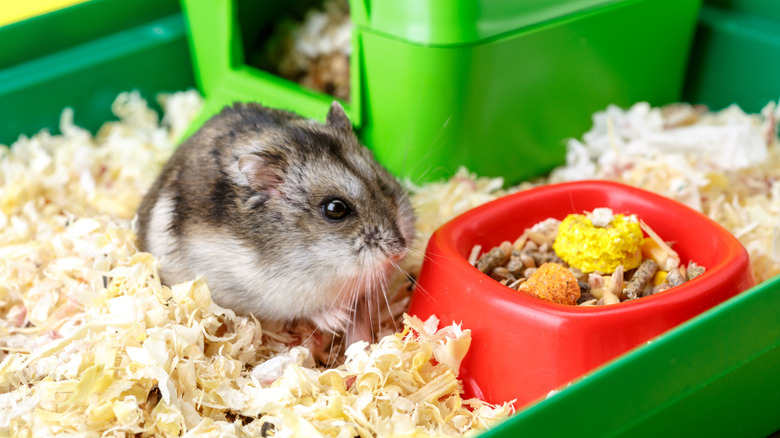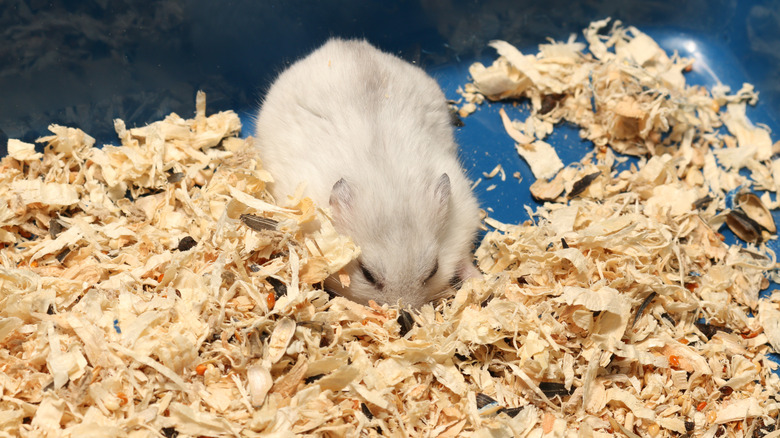How To Tell If Your Dwarf Hamster Is Dying
Everyone who's ever had to say goodbye to a pet can probably agree on one thing: They wish they would've lived a little longer. While some pets can endure for decades, the lifespan of animals like hamsters is much shorter. The average lifespan of dwarf hamsters (Chinese, Russian, Roborovski, etc.) in particular is only 24 to 36 months.
It's important to note that the average lifespan of a hamster is just that, an average. Some hamsters might not make it to a year, even in captivity. Just as with any other pet rodent, diet, enclosure, and environment can all play a role in a hamster's lifespan, with the power to extend it or shorten it. Speak with your veterinarian to ensure you're feeding your hamster the best diet and housing them in the right environment and type of enclosure.
After you've checked all the boxes to help them live a happy, healthy life for as long as possible, prepare yourself for what's ahead. Hamsters have one of the shortest lifespans among pets, so be on the lookout for the tell-tale hints that the end is near.
Look for changes in your dwarf hamster's appearance, diet, behavior, and vital signs
As a dwarf hamster parent, you see your pet every day to feed them, play with them, give them water, clean their cage, etc. These daily interactions are important because they allow you to determine if something seems "off" later. For example, if you notice your hamster eating less, acting sluggish, and excreting soft, watery stool (diarrhea), head to the vet as soon as possible; these combined symptoms are associated with a potentially fatal and common disease called wet tail. A loss of interest in water, weight loss, and little or no response to stimuli could also indicate that your hamster is nearing the end of their life or experiencing a serious health problem.
Visible changes are typically the easiest to spot in your dwarf hamster, but they don't necessarily mean that your pet is going to die the same day you detect them. On the other hand, changes in vitals are more likely to indicate that your hamster doesn't have much time left. Labored breathing, a weak heart rate, and a lower body temperature typically occur within minutes before a hamster passes. In this state, hamsters usually are not very responsive to their surroundings, and their movement is limited.
Remember, dwarf hamsters live for only a few years tops. If health problems are present, many can be detected by visible changes. Some of these changes might be treatable to extend their life, but others might not. A veterinarian can let you know for sure and help you better prepare for your hamster's final days. After their death, follow these steps to give your hamster a proper burial.

